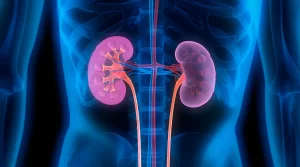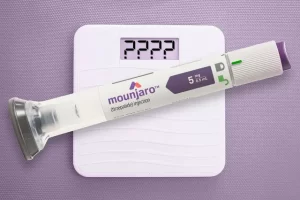Diabetic Coma: Recognizing Symptoms, Treatment Options, and Prevention Strategies
HOME | DIABETES EDUCATION | DIABETIC COMA: SYMPTOMS, TREATMENT, AND PREVENTION
A diabetic coma is a severe complication of diabetes that requires immediate medical attention. Recognizing the signs and understanding the risk factors associated with this condition is crucial for diabetic patients and their caregivers.
By implementing preventive measures and effectively managing diabetes, individuals can significantly reduce the chances of experiencing this life-threatening situation.
Key Takeaways
- A diabetic coma is a life-threatening condition caused by high or low blood sugar levels.
- Immediate medical intervention is necessary to stabilize blood sugar and prevent complications.
- Diabetic comas can be caused by diabetic ketoacidosis, hyperosmolar coma, or hypoglycemic coma.
- Prompt recognition, intervention, and monitoring are crucial for preventing diabetic coma and its complications.
Overview of Diabetic Coma
Diabetic coma is a life-threatening condition characterized by unconsciousness resulting from high or low blood sugar levels in individuals with diabetes. When blood sugar levels become too high (hyperglycemia) or too low (hypoglycemia), the body is unable to function properly, leading to a medical emergency.
In cases of hyperglycemia, the body lacks sufficient insulin to regulate blood sugar levels, causing them to rise dangerously. Conversely, hypoglycemia occurs when blood sugar levels drop too low due to an excessive amount of insulin or inadequate food intake. Both situations can result in diabetic coma if left untreated. Diabetic coma is a critical condition that requires immediate medical intervention to stabilize blood sugar levels and prevent further complications.
It is crucial for individuals with diabetes to closely monitor their blood sugar levels and seek prompt medical attention if symptoms of high or low blood sugar arise to avoid the potentially life-threatening consequences of diabetic coma.
Symptoms of Diabetic Coma
Recognizing the symptoms of diabetic coma is crucial for managing this life-threatening condition. The symptoms can vary depending on the underlying cause. Here are the common symptoms associated with different types of diabetic coma:
- Diabetic ketoacidosis (DKA): Unconsciousness, fruity breath odor, extreme thirst, confusion, weakness, and rapid breathing.
- Diabetic hyperosmolar coma: Extreme dehydration, mental changes, vision issues, confusion, weakness, and extreme thirst.
- Diabetic hypoglycemic coma: Confusion, slurred speech, seizures, blurred vision, weakness, and extreme hunger.
Early recognition of these symptoms is important as they indicate a medical emergency that requires immediate intervention. By being aware of these symptoms, individuals with diabetes and their caregivers can take prompt action to prevent the progression of diabetic coma.
Causes of Diabetic Coma
Severe low blood sugar, diabetic ketoacidosis (DKA), and nonketotic hyperosmolar syndrome (NKHS) are the primary causes of diabetic coma. Hypoglycemia, experienced by individuals on insulin therapy, can lead to a coma if blood sugar levels drop dangerously low. Diabetic ketoacidosis occurs when there is a lack of insulin, causing ketone bodies to accumulate in the bloodstream. This condition is more common in individuals with type 1 diabetes. Nonketotic hyperosmolar syndrome, on the other hand, is seen exclusively in type 2 diabetes, particularly in older adults. High blood sugar levels in NKHS result in dehydration. Checking for ketone bodies is crucial when blood glucose levels exceed 240 mg/dL to prevent diabetic coma in cases of DKA. Risk factors for diabetic coma include hypoglycemia unawareness, insulin usage, and complications such as NKHS and DKA in different types of diabetes.
NonKetotic Hyperosmolar Coma
Nonketotic Hyperosmolar Coma (NKHS) is a life-threatening complication that occurs in individuals with type 2 diabetes, especially older adults. It is characterized by extremely high blood sugar levels, leading to severe dehydration. Unlike other diabetic comas, NKHS does not involve significant ketone accumulation. Prompt medical attention is crucial to prevent complications.
Key facts about Nonketotic Hyperosmolar Coma include:
- It is more common in older adults with type 2 diabetes.
- Blood sugar levels can exceed 600 mg/dl.
- Dehydration is a significant concern in NKHS.
- Ketone accumulation is not a prominent feature in NKHS.
To prevent Nonketotic Hyperosmolar Coma, individuals with type 2 diabetes should regularly monitor their blood sugar levels and effectively manage their condition. Prompt medical intervention is necessary if symptoms of NKHS arise to avoid life-threatening complications.
Risk Factors for Diabetic Coma
Risk Factors for Diabetic Coma
Diabetic coma can occur in individuals with diabetes due to various factors that disrupt blood sugar levels and can lead to life-threatening complications. People with Type 1 diabetes are at a higher risk of diabetic coma because of insulin deficiency and the buildup of ketones. On the other hand, individuals with Type 2 diabetes are more prone to diabetic coma triggered by events such as missed medications, infections, or increased sugar intake.
There are several risk factors associated with diabetic coma, including illness, surgery, issues with insulin delivery, alcohol use, inadequate diabetes management, and hypoglycemia unawareness. Intentional skipping of insulin, alcohol consumption, and substance abuse can also increase the risk.
It is important to recognize these risk factors in a timely manner and take proactive measures to prevent the occurrence of diabetic coma in diabetic patients.
Complications of Diabetic Coma; Diabetic Ketoacidosis
Diabetic ketoacidosis (DKA) is a severe complication of diabetes that occurs when the body lacks insulin and starts using fat for energy. This can lead to the buildup of ketone bodies in the blood, causing symptoms like extreme thirst, frequent urination, nausea, vomiting, abdominal pain, and a fruity breath odor.
If left untreated, DKA can progress to a diabetic coma. Immediate medical intervention is crucial, involving the administration of intravenous fluids and insulin therapy to normalize blood glucose levels and correct the ketone imbalance.
Monitoring blood glucose and ketone levels, especially when blood glucose is above 240 mg/dL, is essential in preventing diabetic ketoacidosis and subsequent coma.
Preventive Measures for Diabetic Coma
To prevent diabetic coma, proactive measures must be taken to effectively manage diabetes and minimize the risk of complications. Monitoring blood sugar levels daily is crucial in preventing diabetic coma. Utilizing continuous glucose monitors can aid in early detection of fluctuations that may lead to a coma.
Education on recognizing early warning signs and symptoms of high or low blood sugar is essential for prevention. Maintaining a healthy lifestyle through proper diet, exercise, and stress management can help prevent diabetic coma.
It is also important to promptly address any changes in insulin needs or medication regimen with healthcare providers. By implementing these preventive measures, individuals with diabetes can reduce the likelihood of experiencing a diabetic coma and maintain optimal health.
Diagnosis of Diabetic Coma
Diagnosis of Diabetic Coma
When diagnosing diabetic coma, emergency medical teams conduct a physical exam and evaluate the patient’s condition and medical history. They perform tests to confirm the diagnosis and determine the underlying cause. These tests include blood glucose tests to measure the patient’s blood sugar levels, as well as lab tests to assess ketone, nitrogen, creatinine, potassium, and sodium levels.
These tests help determine the severity of the condition and identify the specific cause of the diabetic coma, such as hypoglycemia, diabetic ketoacidosis, or Nonketotic Hyperosmolar Syndrome. Additionally, emergency medical teams may look for a medical identification bracelet or necklace, which can provide critical information about the patient’s condition. Quick and accurate diagnosis is crucial for prompt and effective treatment of diabetic coma.
Treatment Options for Diabetic Coma
Prompt and appropriate medical intervention is essential in the treatment of diabetic coma to restore healthy blood glucose and insulin levels and prevent further complications. Treatment options for diabetic coma depend on the blood sugar levels at the time of diagnosis.
In cases of high blood sugar, intravenous fluids, insulin administration, and infection management are necessary. On the other hand, low blood sugar (hypoglycemia) requires glucagon injections or intravenous dextrose to raise blood glucose levels. Immediate medical attention is crucial in diabetic coma cases, and emergency medical services should be contacted promptly.
The primary goal of treatment is to restore healthy blood glucose and insulin levels, which can help prevent complications. Adjustments in diabetes treatment are also important to avoid persistently high or low blood glucose levels that can lead to diabetic coma.
Managing High Blood Sugar in a Diabetic Coma
Managing high blood sugar in a diabetic coma requires immediate medical intervention and addressing the underlying cause to restore healthy glucose levels. Here are some key steps in managing high blood sugar levels during a diabetic coma:
- Immediate medical intervention: Intravenous fluids and insulin are crucial in managing high blood sugar levels in a diabetic coma.
- Monitoring blood glucose levels: Regular monitoring of blood glucose levels helps healthcare professionals determine the effectiveness of treatment and make necessary adjustments.
- Addressing insulin delivery issues: If high blood sugar is caused by insulin delivery issues, such as incorrect dosing or malfunctioning insulin pumps, these issues need to be addressed promptly.
- Treating underlying conditions: Complications like diabetic ketoacidosis can lead to dangerously high blood sugar levels in a diabetic coma. Treating the underlying cause is necessary to effectively manage high blood sugar.
As your body breaks down fat, it releases ketones into your bloodstream. For a person with diabetes, a high amount of ketones causes their blood to become acidic. If you don’t get treatment for DKA in time, it can lead to a coma. Someone who has DKA usually has blood sugar levels above 250 mg/dL.
https://my.clevelandclinic.org/health/diseases/16628-diabetic-coma
Managing Hypoglycemia in a Diabetic Coma
Immediate treatment is crucial to managing hypoglycemia in a diabetic coma. Hypoglycemia in a diabetic coma is characterized by blood sugar levels below 70 mg/dL. Symptoms include confusion, shakiness, sweating, rapid heartbeat, and dizziness, which can progress to unconsciousness.
The treatment involves consuming fast-acting carbohydrates like glucose tablets, juice, or candy to raise blood sugar levels quickly. In severe cases where the individual is unconscious, glucagon injections may be necessary.
Regular monitoring of blood sugar levels and carrying glucose sources like tablets or gel are essential for managing and preventing hypoglycemia in diabetic comas. Prompt intervention can help prevent complications and potential brain damage associated with low blood glucose levels.
First Aid for Diabetic Coma; Hyperosmolar
The appropriate first aid response for a diabetic coma, specifically during a hyperosmolar episode, involves immediately contacting emergency services. Giving food or drink to the individual experiencing diabetic coma symptoms should be avoided.
Instead, position the person on their side to prevent breathing obstructions during the episode. Following operator instructions until medical help arrives is crucial for managing diabetic coma situations effectively. While glucagon may be considered for reversing hypoglycemia in diabetic coma cases, insulin should not be administered.
Prompt medical attention is crucial in treating diabetic coma, as it can be life-threatening. Therefore, contacting emergency services is the first step in ensuring the individual receives the necessary medical help to stabilize their blood sugar levels and manage the hyperosmolar episode appropriately.
Understanding and Preventing Diabetic Coma
To effectively prevent diabetic coma, individuals with diabetes should focus on managing their blood sugar levels, educating themselves about the condition, and being aware of early symptoms. Regular monitoring of blood sugar levels is crucial in preventing both low and high blood sugar, which can lead to a diabetic coma.
It is also important to adhere to a diabetes treatment plan, including taking prescribed medications and making necessary lifestyle changes, to reduce the risk. Education plays a vital role in preventing diabetic coma by increasing awareness of diabetes-related symptoms and the importance of seeking prompt medical care.
By implementing these prevention strategies, individuals with diabetes can significantly lower their risk of diabetic coma and maintain better overall health.
Frequently Asked Questions
What Is the Main Treatment for a Diabetic Coma?
The main treatment for a diabetic coma involves addressing the underlying cause, such as diabetic ketoacidosis (DKA), hyperosmolar hyperglycemic state (HHS), or severe low blood sugar. Prompt and appropriate medical care is crucial for improving outcomes and preventing complications.
How Long Does It Take to Come Out of a Diabetic Coma?
The duration to come out of a diabetic coma varies based on individual circumstances, the cause of the coma, and the effectiveness of treatment. Prompt medical intervention to stabilize blood glucose levels is crucial for recovery.
How High Does Your Blood Sugar Have to Be to Go Into a Coma?
Blood sugar levels above 600 mg/dl or over 240 mg/dl may indicate a risk of coma.
How Will You Manage a Hypoglycemic Coma?
To manage a hypoglycemic coma, prompt medical attention is crucial. Treatment involves administering glucagon injection or intravenous dextrose to raise blood sugar levels. Immediate intervention is necessary to prevent complications and potential brain damage.



